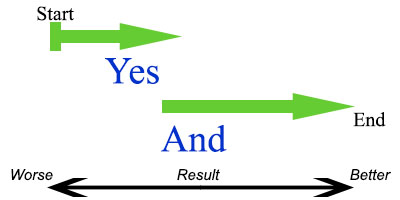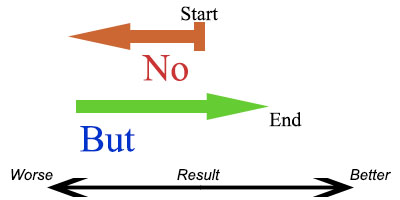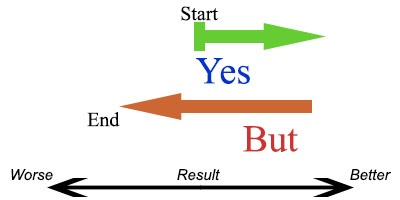
While this article is primarily aimed at Dungeons & Dragons 5th Edition Dungeon Masters, the information will be helpful for both DMs and Players, as well as anyone playing any TTRPG system.
You’ve spent hours planning tonight’s D&D Session with great care. You know what monsters your player’s will encounter, what town or other locations they want to visit, and you’ve created the perfect NPC to show off how your BBEG (Big Bad Evil Guy) isn’t to be trifled with. Your friends brought the pizza and drinks, have sat down with their character sheets and their lucky dice, and turn to you, hoping for a night of fun.
Suddenly, shortly into your session somewhere between your players buying a ton of gear from Tristan, the salty merchant NPC you created and a combat against the BBEG’s main henchman, who you were certain they were heading to, they act unpredictably. They don’t want to hunt down that villain you’ve created. They want to help the tavern keeper’s daughter find her lost pet goat, which you mentioned briefly three weeks ago as a joke and then forgot about. They’ve thrown your story out the window, gone off-plan, and now expect everything to proceed as if this was perfectly normal!
No matter how much you plan, your players are going to find something you didn’t plan for and latch onto that. There’s a reason so many experienced DMs agree: no plan survives first contact with the players.
What do you do now?
If your first instinct is to panic, know this: you are not alone, and I’m here to help.
I see DMs ask what to do in these situations more than any other on online forums, Twitter, Facebook Groups, Reddit and Discord chat. We have all been there. And overwhelmingly, the most useful answer people reply with is “roll with it.†They mean figuratively, but literally works too! I’m going to show you the skills to work on when trying to improvise, the tools you can use to make improvising easier, and then show you how you can used those tools.
Traits of a Good Improvisor
Before we get into how to use the Improv tools, practicing the following traits will make the process much easier and keep the game fun for everyone. Practice these traits to allow yourself to be open to the unexpected.
- Listen to Others
- Agree and Support
- Believe in Working Together
- Respect your Partners
- Don’t Fear Failure
- Be Comfortable being Silly or Strange
- Exude Good Energy
Use Just Two Words to Guide Your Response

When the players veer away from what you have planned, most will advise you to improvise using the “yes, and†method of Improv Comedy Theatre. These two words hold a lot of power!
The “yes†part means to agree to the basic situation and setup, and the “and†part means to add new information to progress the scene.
Players: We want to stop our planned journey to the City of Waterdeep to go talk to the city guard who has the next clue about Red Riding Hood’s disappearance. Instead we want to go explore the woods.
DM: Yes, you can go into the woods, and after walking through the woods for half an hour, you find traces of a freshly abandoned campsite and a red piece of cloth caught on some branches.
A good “and†is going to be simple and precise, leading to a clear understanding of what actions can come next. It should build off the idea initially presented. It does not need to be a display of one-upmanship, and should not come out of left field.
“Yes, and†is potentially the most important tool you have to improvise a story while keeping your game inclusive of the fun ideas everyone is coming up with. With the above example, you can still give the players the freedom to go off your planned script, while keeping to the story of following the clues (and potentially making up some new NPCs who were at this campsite for your players to investigate, chase, or fight, instead of whatever similar encounters you may have had planned for them in the city).
It Works for Players Too
For Players, “Yes, and†is going to be the best option of improvising to keep the game moving forward and fun. Because Players have responsibility of saying yes to the adventure to keep from completely derailing a game, they should reserve saying “No†for when it is really important. However, a “no†can be a tool for the DMs, as discussed later.
Player 1: Wizard, can I drink that potion you made?
Player 2: Yes, and I hope I didn’t mix them up and give you the one that makes you very loud all the time!
With the above example, it can lead to the hijinks involved with drinking the wrong potion or not.
I’ll repeat this for any players who skipped to this part, since it is so important: A good “and†is going to be simple, and precise, leading to a clear understanding of what actions can come next. It should build off the idea initially presented. It does not need to be a display of one-upmanship, and should not come out of left field. An example of a bad “yes, and†would be:
Player 1: Wizard, can I drink that potion you made?
Player 2: Yes, and I am a flying dinosaur who has lasers shooting out of my eyes!
This doesn’t work because while flying laser dinos are certainly cool, this idea has nothing to do with the premise.
The reason why “Yes, and†is commonly the only method of improv offered as advice on the many online forums is because it is the best one for players to use to keep the game from devolving into chaos. But because the DM knows the bigger picture story they are trying to tell, they can use a few more tools to spice up the narrative and make the unexpected interesting.
The Simple Tools to Guide Your Improv
“Yes, and†is one two-word way for the lead storyteller, the DM, to approach an unplanned event, but it is not the only way! There are actually four options of what DMs can say to any idea the players present:
- Yes, and
- No, but
- Yes, but
- No, and
First you choose between Yes or No, then between And or But.
For each, we will explore how they are used with the same situation:
The party walks down the dungeon corridor, their torches in hand. They see an elaborate stone door with the carving of an eagle, its mouth open. And in the center of that mouth lies a small hole. The Rouge checks and there is a lock mechanism in the hole. But the party hears voices echoing down the corridor from a distance.
Yes, And
The Rouge picks the lock and succeeds, opening the door. And the party is able to hide in the room. Or: And inside the room is a cloak of invisibility.
The first part, the “Yes†moves the story forward with the offered solution.
In the second part, the “And†propels the story even more ahead in the same direction with a new positive outcome.
In the end, the players are better off by far.
No, But
The Rouge’s attempt to pick the lock fails. But as they give up, they hear snarling and scratching coming from behind the door. The noise of the picking must have alerted some animal on the other side.
The first part, the “No†moves the story backward with the offered solution.
In the second part, the “But†propels the story ahead in the opposite direction with a new positive outcome.
In the end, the players are better off by a little bit, since they didn’t open the door and face this monster.
Yes, But
The Rouge picks the lock and succeeds, opening the door. But when they open it, a strong wind blows all their torches out, and they are left in the dark, unable to see what lies behind the door, or who is coming down the corridor.
This is also known as “out of the frying pan, and into the fire.†The players succeed in their stated action (the “Yesâ€), “but†they wind up unexpectedly worse than where they started. For this reason, this is one of the best options to create a session cliffhanger.
In the end, the players are worse off by a little bit. However this is a useful tool, since it will create new obstacles for the players to overcome, which is part of the fun of the game.
No, And
The Rouge’s attempt to pick the lock fails, and the noise of the clattering Thieves’ Tools in the mechanism draws the voices down the hall quickly to the party’s location.
The first part, the “No†moves the story backward with the offered solution.
In the second part, the “And†propels the story even more back in the same direction with a new negative outcome.
In the end, the players are worse off by far.
How to Apply The 4 Tools To Improve Your Improv Game
The players have just thrown you a curveball and you don’t know what to do.
First, I suggest taking a breath. This gives you a brief moment to think. I know, your players are all looking at you for the next answer or clue. But, if you hold back just a moment, you’re actually building their excitement and anticipation. This is good! Use this moment to take a breath to calm your nerves. You’ll also come off as confident when you do speak, which will make whatever you say seem all that much better.
Next, fit your reply into one of the 4 options above. This narrows down the possibilities and lets your mind focus on more helpful ideas. There are two ways to do this in D&D: either you just decide, or let the dice decide.
Either way, ask yourself: what logical outcome could come from what they have just said, and is there a way to explore their idea, but also bring us back to something I had planned later? The longer you have played with your group, the easier it gets to come up with a fun answer, since you will learn through experience what your players enjoy most about the game, and narrow your replies down with that knowledge.
But what about when you aren’t there yet with your group?
Roll With It: Using the Rolls to Move the Story Along

Literally rolling is a great option: ask them to roll for an applicable skill check. Use this moment to buy some more time to think, and let the roll determine what happens. This has the benefit of letting you learn their reactions to various (random) outcomes over time, while giving you more time to think.
You can let the dice roll determine the success and failure (“Yes†or “Noâ€), while the further outcome (And or But) can either come from your own idea, or you can let the degree of how far the roll was from the DC determine if it is an “And†or a “But.â€
Player: Does this town have a graveyard? I want to explore the graveyard! Maybe all the skeletons we’ve been fighting come from there.
DM (who never thought about this town having a graveyard): Ok, what are you looking for?
Player: tells whatever it is they are looking for.
DM:(starts thinking here) Roll me….an….investigation check.
Player: I rolled a 14.
DM thinks to themselves:
That’s almost a medium difficulty, but not quite. If there were just open graves, that would be easy to spot, so I could say “Yes you investigate, and you find open graves.†That will give them a small win, a moment of excitement, and potentially open the story to something they just created.
Or
That’s almost a medium difficulty, but not quite. A medium difficulty thing would be to find the gravestone of a particular person out of all of them. Maybe that one had a clue, but since they didn’t find it, it doesn’t matter, I don’t need to know that clue yet. I could say “You investigate and no, you don’t find the thing you are looking for, but as you look around a shadowy figure approaches you, asking what you are doing here. It’s the town Undertaker.†Yeah, I can give him some of my prepared information to get them The Clue They Need to get them back on track if they Role Play with him.
And here is a secret most new DMs don’t know: You also don’t need to know the Difficulty Challenge rating until after they have told you the result. You didn’t have to create all 4 scenarios, just the one (or maybe two) that fits to the dice roll in the moment. If you only come up with one, that’s fine, play that one out. The more you do it, the better and faster you’ll get at it. Keep doing it this way, and maybe you’ll come up with two, but one is enough.
Congratulations! You just took your first step of improvising: creating a DC on the fly. Did they roll really high? That’s a success. Really low, that’s a failure. Somewhere in the middle, maybe you give it to them with a negative consequence, or you have them fail, but with a benefit tacked on. You’ll be sure to move the story forward by adding either a benefit, or a consequence for them to overcome.
Embrace the Unexpected
One important thing to note: DMs shouldn’t be saying “No†because they just don’t like the player, or because the idea isn’t what they had planned. It’s a fine line between saying “No†in a way to actually advance the story, and saying no because you don’t want to lean in to the unexpected.
That thing your players latched on to which you never planned for? They want to explore it because it was probably an idea they had to begin with, something they were inspired in the heat of the moment to think up. And that on-your-feet thinking is a huge draw to the game. It sets your TTRPG apart from a Boardgame or an RPG video game. This is why we play this kind of game, so lean into it and see where it can go. It doesn’t have to be perfect, it just has to be fun enough to get you to the next bit. And with that next bit, there’s a good chance you can salvage what you planned and stick some of it into that.
It’s a Storytelling Game
D&D and other RPGs at their hearts are storytelling games. These stories unfold as the session plays out. The most basic element of any story is conflict and its resolution. The DM provides the conflict, but the players provide the resolution.
When the players run into a group of Goblins attacking a caravan of merchants, they can choose to fight the Goblins, how they fight the Goblins, like sneaking up behind them, by shouting “Halt, vile scum!†or by taking ranged pot shots and using spells to attack from afar. Or the players may try to talk them out of committing crimes. Or they could go around them and not engage them at all. The DM doesn’t get to decide how to resolve the conflict they present to the players.
If the DM decides only one possible resolution is possible, that will be unsatisfying for the players who chose a different path, especially if they think their idea was great (and let me tell you, they always think their idea is great). Forcing a particular solution is what the D&D community has named railroading and it is generally frowned upon since it removes player agency, that is the freedom to make meaningful choices. This is not fun for the players.
Most of the advice given to D&D players and DMs is only to use the “Yes, and†option, and ignores the other three. In Improv Comedy, the humor comes from always building higher and higher the ridiculousness of the situation, which is what “Yes, and†specializes in. But TTRPGs are different from comedy skits, they are closer to stories. Our games can last years in multiple hour sessions, comedy skits are short. For longer form storytelling, a variety of ups and downs can build dramatic tension and vary the pacing for enjoyable moments. Sometimes, you want to end a session on a cliffhanger, but you wouldn’t want that in a short comedy sketch.
Stacking conflicts one after another, and their varying resolutions, gives the game a pacing and helps to build excitement. Having moments of rising “yes, ands†can be great, if it’s also mixed in with some “no, buts†and the others. Think of how much more satisfying is it to have a big win after a crushing loss! Sometimes losing is just as important as winning, as long as it doesn’t stop the game.
So it’s important to use the “Ands†and “Buts†to ensure the game moves forward no matter the outcome of the “Yes†or “No.†And the smaller consequences that come from the successes and failures of the player decisions are where a lot of the fun of the game can be teased out.
Start Your Improv By Moving One Step At a Time
The DM role is about making decisions about the outcomes of actions your players take. These decisions don’t have to be perfect, they just have to keep the game going while having fun. If later you decide a choice wasn’t the best one, that’s ok, you can fix it later. If you let your players off too easy, that’s ok, they probably will enjoy an easy win. Just don’t make everything an easy win. If your decision came down a bit hard on them this time, don’t worry, there’s always more decisions to give someone a positive spotlight right around the corner. Fun in the moment is always going to be the better choice than what is perfect.
With the tips above, you’ll start improvising without having the stress of creating every possible option under the sun. Leaning into the improv will make your games more exciting and more fun as you explore everyone at the table’s ideas. Give them a try and improve your games with improv.





